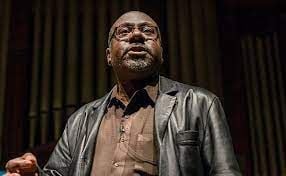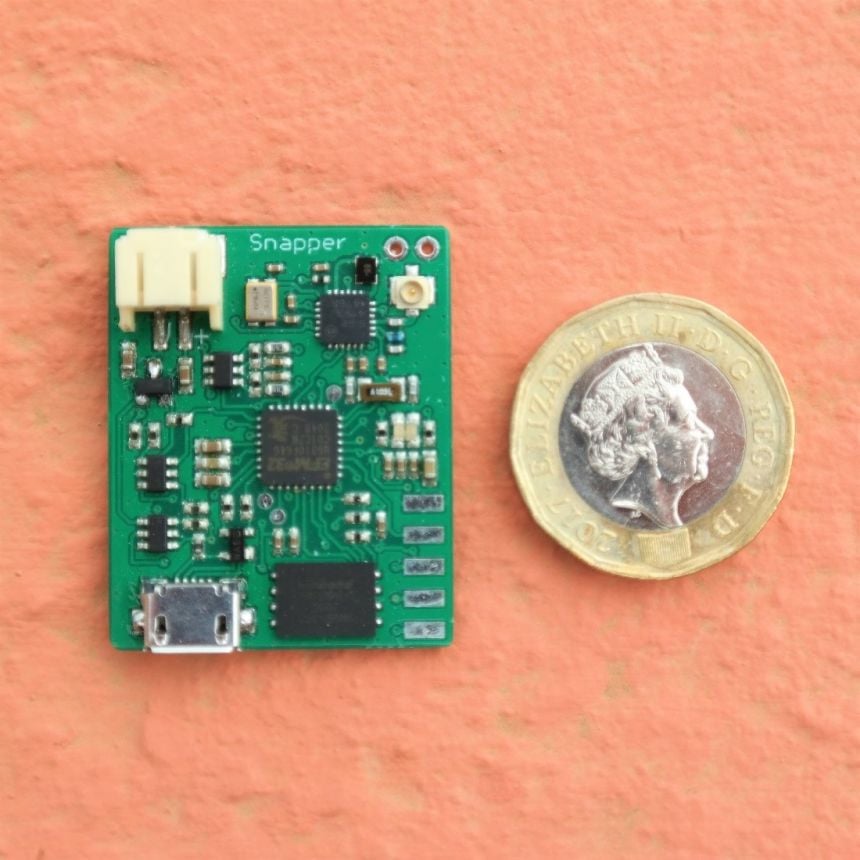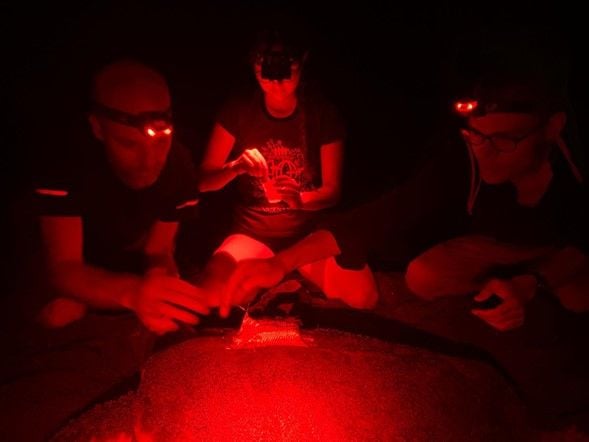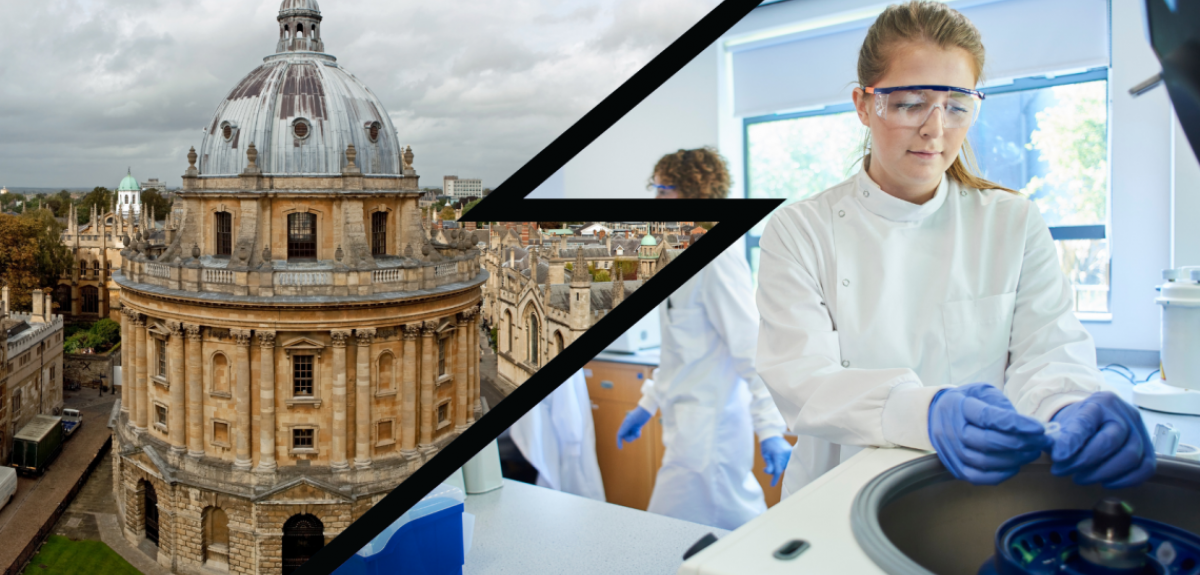Features
Vladimir Putin has long insisted Ukraine is part of the country he rules. This was painted more starkly than ever as he announced that Russian troops were undertaking a “special military operation” in its western neighbour. But to the rest of the world, what Russia is undertaking is simply an invasion.
Putin has been softening up the world for its latest foreign policy adventure for some years now.
'Kiev is the mother of Russian cities,' he wrote in March 2014. 'Ancient Rus is our common source and we cannot live without each other.'
A few days later, Russia completed the annexation of Crimea. Eight years later, during which time more than 14,000 people have died in a Russian-instigated war of insurgency in the Donbas region of eastern Ukraine, he has returned to this theme – backed by the might of Russia’s armed forces.
The Russian president made this intention crystal clear in an hour-long and fairly wide-ranging speech on February 21.
'Ukraine is not just a neighbouring country for us,' he told the Russian people in a national broadcast. 'It is an inalienable part of our own history, culture and spiritual space.'
He [Putin] repeatedly denied Ukraine’s right to independent existence – and, at times, that the country exists at all as an independent entity. Instead he appeared to accept the unity of the two countries as historical fact
He repeatedly denied Ukraine’s right to independent existence – and, at times, that the country exists at all as an independent entity. Instead he appeared to accept the unity of the two countries as historical fact. In doing so, he revealed the structures of an imperial ideology with a chronology and ambition that goes far beyond post-Soviet nostalgia to the mediaeval era. But to what extent is that ideology shared by Russians?
One of the striking elements of Putin’s latest speech about Ukraine, which accompanied the recognition of Donetsk and Luhansk as independent states, was his insistence that Ukraine exists as a by-product of Russian history, 'Since time immemorial, the people living in the south-west of what has historically been Russian land have called themselves Russians and Orthodox Christians.'
One of the striking elements of Putin’s latest speech about Ukraine...was his insistence that Ukraine exists as a by-product of Russian history...But he later undercut his insistence...stating, 'Modern Ukraine was entirely created by ...Bolshevik, Communist Russia
But he later undercut his insistence of these shared origins, stating, 'Modern Ukraine was entirely created by Russia or, to be more precise, by Bolshevik, Communist Russia.'
To him, the making of modern Ukraine only started 'after the 1917 revolution', and Ukrainians have 'Lenin and his associates' to thank for their state. This was a reference to Lenin’s creation of a federation of Soviet states, the USSR, out of the ethnic diversity of the former Russian empire.
In reality, Ukrainian aspirations for statehood predated revolution by at least two centuries. From the Ukrainian Hetmanate’s 1710 Bendery Constitution to the 1917 establishment of the West and Ukrainian People’s Republics and appeals at the Paris Peace Conference for status, Ukrainians have continuously asserted themselves as a distinct people.
The formation of the USSR was, in part, conditioned by the previous creation of these two independent Ukrainian Republics in the aftermath of the revolution and the disintegration of the Austro-Hungarian Empire. These republics stemmed directly from the 19th century Ukrainian romantic national movement that reassessed the impact of the Cossack past, fuelling the development of an identity centring on a distinct language, culture, and history.
In reality, Ukrainian aspirations for statehood predated [the Russian] revolution by at least two centuries
When the Bolsheviks, Lenin at their head, took control over the Ukrainian territories, the idea of Ukraine as an independent nation could not be ignored, and led to the independent status – on paper – of the Ukrainian Soviet Republic in 1922.
What Putin’s address reveals is the desire to plot Russian and Ukrainian history through the lens of imperialism
What Putin’s address reveals is the desire to plot Russian and Ukrainian history through the lens of imperialism. He is attempting to establish a direct line from shared ancient origins to a first and second Russian empire: one under the Romanov Tsars (1721-1917) and the second as part of the USSR.
Across those two imperial epochs, Ukraine is reduced to a tributary state and mentions of national aspirations are smothered. This is precisely the message that the Kremlin continues to disseminate in the 21st century.
A lack of popular appetite
But what does the Russian public believe? Three decades ago, when the USSR collapsed, only rare and often ultra-nationalist politicians resorted to imperial history in imagining Russia’s post-soviet future. As early as the 1990s, ultra-nationalist politician Vladimir Zhirinovsky advocated ceasing coal supplies to Ukraine as a tactic to bring back Russia’s lost territories, but he remained a fringe figure in Russian politics.
Still, in 2011 and 2012 Global Attitudes surveys conducted by Pew Research Centre, support for imperial ideology was not insignificant. When asked whether 'it’s natural for Russia to have an empire', only 31% of Russian respondents disagreed. Whether nostalgia for empire translates to appetite for war to 'regain territory' remains unclear.
It is impossible to paint all Russian perceptions of Ukrainians with the same brush. Russian feelings toward their neighbour have historically ranged from genuine feelings of brotherhood and warmth to virulent expressions of xenophobia manifesting in episodes of ethnic cleansing, such as the 1932 orchestrated famine known as the Holodomor.
Only 26% of Russians wanted the Donbas to become part of Russia, while 54% are in favour of varying forms of independence...War remains an unpopular choice, with only 18% of Russians unreservedly supporting armed conflict
But when it comes to the question of how Russia should position itself with regards to claiming eastern Ukrainian provinces as long-lost parts of the 'Russian empire', opinion is more clearly divided. Only 26% of Russians wanted the Donbas to become part of Russia, while 54% are in favour of varying forms of independence (within Ukraine or separate). War remains an unpopular choice, with only 18% of Russians unreservedly supporting armed conflict in defence of the two breakaway republics in a poll from April 2021.
Post-Soviet neo-imperialism
The rhetorical and physical erasure of Ukrainian history and identity makes it much easier to assert claims of shared Russian heritage
Ultimately, the use of 'empire' as an ideology reveals Russia’s yearning for – or sense of entitlement to – a third imperial regime. The rhetorical and physical erasure of Ukrainian history and identity makes it much easier to assert claims of shared Russian heritage. This will be important to bear in mind as we watch the development of this renewed conflict over Ukraine.
Parallels with other formerly colonised peoples abound. But, as Kenya’s envoy to the UN put it, no matter what conditions presided over the drawing of modern borders, 'we must complete our recovery from the embers of dead empires in a way that does not plunge us back into new forms of domination and oppression'.![]()
Olivia Durand is a Postdoctoral associate in history, University of Oxford
This article is republished from The Conversation under a Creative Commons license. Read the original article.
Augustine, Aquinas, Newman, Bonhoeffer and…James Cone. Next year, the renowned ‘father’ of Black Liberation Theology joins the ranks of ‘Special Theologians’, who can be studied in-depth by senior Oxford Theology students.
 Professor Anthony Reddie
Professor Anthony Reddie During lockdown, the Research fellow of Regent’s Park College was looking through the list of ‘Special Theologians’, studied by third year Theology students. And, says Professor Reddie, he realised, ‘They are all great people, but no one was modern and no one was writing out of a contextual experience.’
Professor Reddie continues, ‘I was aghast that we are not studying James Cone when he left such a huge and important body of work [Cone died in 2018].’
He put the suggestion to a senior member of the faculty and Professor Reddie says, ‘I was pushing at an open door as it turned out.’
His idea was approved – and the process for creating the course began. And, from the next academic year, third year students will be able to opt to study James Cone with Professor Reddie.
In the US at the time, Sunday mornings were the most segregated time of the week, with people dividing on racial lines to go to church...Cone thought it was terrible that the white churches colluded with segregation
Professor Anthony Reddie
Although comparatively little known in the UK, Cone has been a major figure in US theology for decades. Professor Reddie says, ‘Cone called out racism in the existing Christian tradition. In the US at the time, Sunday mornings were the most segregated time of the week, with people dividing on racial lines to go to church.’
He adds, ‘Cone thought it was terrible that the white churches colluded with segregation.’
According to Professor Reddie, Cone’s academic career started around the time of the rise of the Black Power movement in the late 1960s and began with a 1969 work, Black Theology and Black Power.
 Autobiographical reflections, published by Orbis
Autobiographical reflections, published by OrbisProfessor Reddie maintains, Black Liberation Theology has similar foundations to Liberation Theology. He says, ‘Liberation Theology says God has a special relationship with the poor and marginalised. In the same way, Black Liberation Theology maintains God has a special relationship with the people of African descent.’
Professor Reddie maintains, Black Liberation Theology has similar foundations to Liberation Theology
He adds, ‘Black Liberation Theology looks at how Christianity became part of the colonial project and was tied into slavery…There were individuals of course, such as Wilberforce, who were Christian opponents of slavery. But the Church of England was tied into the establishment…and Christianity was used in order to make people better slaves.’
Cone, says Professor Reddie, sets down the architecture for a systematic Black Liberation Theology.
‘He was radical in terms of challenging the silence of church leaders in the face of white supremacy,’ says Professor Reddie.
Cone’s ideas were based on US specific circumstances. Many African Americans had lived in the country for centuries longer than white immigrants and would never consider themselves anything other than Americans, according to Professor Reddie. In the UK, however, he says, the colonial backgrounds of many diverse communities present different challenges.
‘There is a sense of not belonging anywhere, although that is not shared by younger people, whose parents were born in the UK,’ he says.
It is not about having “a person of colour” for the sake of it. Cone is on the syllabus because he is brilliant...Now I just have to wait to see if anyone wants to do the course
Professor Reddie
But Professor Reddie feels very much at home in Oxford. He laughs, ‘I don’t have imposter syndrome…but that’s because I came at the right time – when I was old enough not to feel intimidated. I don’t know if I would have survived at 18…but I enjoy it now.’
‘There is intellectual openness, but James Cone ticked every box,’ he says.
Having said that, though, Professor Reddie concludes, ‘It is not about having “a person of colour” for the sake of it. Cone is on the syllabus because he is brilliant.’
‘Now I just have to wait to see if anyone wants to do the course,’ he laughs.
Read more about Professor Reddie here.
Right now, there is arguably no greater technical challenge for the UK, and the rest of the world, than the energy systems transition. Radical challenges require radical solutions.
The way we source energy, the way we use it domestically, at work, the way transport is powered...and how this is all financed and implemented – are all pieces of an extremely complex puzzle
The way we source energy, the way we use it domestically, at work, the way transport is powered and how this is all financed and implemented – are all pieces of an extremely complex puzzle.
Recent international diplomatic crises, surges in UK energy prices and political lobbying have starkly highlighted this.
Each component of our energy system presents its own challenge, with its own stakeholders, and yet each needs to work seamlessly together in a unified system, if we are to meet our carbon reduction commitments.
Everyone needs to be able to adapt to the changes and they need to benefit those at all stages of life, financial situations and geographical locations.
Such complexity requires the minds of many, and for all considerations to be represented in the thinking. Technological innovation and changes in habit will only be embraced if they work on the ground and benefit lives already stretched with demands on time and money.
A new world-leading multi-disciplinary hub and co-working space in Oxford, Mini TESA - The Energy Systems Accelerator pilot - aims to...tackle the challenge. And this month, it opens its doors
A new world-leading multi-disciplinary hub and co-working space located in Oxford, Mini TESA - The Energy Systems Accelerator pilot – aims to bring such minds together to tackle the challenge. And this month, it opens its doors.
Located in a converted 1960s building on an industrial estate, that is home to an assorted mix of research labs, start-ups, social enterprises and wholesale food markets, a stone’s throw from the city’s rail station, the refitted interior is a vision for a new way of working and a catalyst for change.Inside this building three exciting things are happening simultaneously, which could just lead the way to creating a blueprint for the UK’s energy systems transition.
Firstly, in a unique working arrangement, scientists are sharing space with social enterprises, industrial and local government stakeholders. Concerns about intellectual property (IP) which have traditionally funnelled scientific groups into tightly protected groups, working in highly specialised siloes, have been re-thought so a shared mission enables collaborations previously thought impossible.
Secondly, scientists, researchers and university academics from a wide variety of disciplines are physically working together to pool expertise and think through problems from multiple perspectives – from the sharp end of technological challenges and the economics of how this works in financial systems, to the human behaviour considerations needed for adaptation.
Thirdly, teaching and research are flourishing side by side with the University of Oxford’s MSc in Energy Systems led by Professor Wallom, taught in open, adaptable learning spaces right across the hall from one of the country’s most prestigious energy research labs led by Malcolm McCulloch - Associate Professor in Engineering Science and head of the Energy and Power Group at the University of Oxford.
This is one of many innovative projects that aims to accelerate the UK’s economic revival while delivering sustainable growth across the country
Greg Hands MP, Minister for Energy, Clean Growth and Climate Change
Greg Hands MP, Minister for Energy, Clean Growth and Climate Change, said on its launch: ‘Today marks an exciting new chapter for Oxfordshire with this flagship project set to make waves across the UK energy sector and local economy.
‘As part of the Government’s ‘Getting Building Fund’, this is one of many innovative projects that aims to accelerate the UK’s economic revival while delivering sustainable growth across the country.’
Professor Chas Bountra, Pro-Vice Chancellor (Innovation) for the University of Oxford, said: ‘The University is proud to be leading this project, bringing together engineers, scientists and social scientists from within the University to work closely with businesses and civic stakeholders.
‘The Oxford innovation ecosystem is the perfect place for this collaboration to ensure we make the very best improvements to energy systems that will contribute to a zero-carbon future. Not only that, but TESA will support entrepreneurs building new businesses, create jobs, and encourage investment and economic growth in the local community and across the UK.’
The Oxford innovation ecosystem is the perfect place for this collaboration....Not only that, but TESA will support entrepreneurs building new businesses, create jobs, and encourage investment and economic growth
Professor Chas Bountra, Pro-Vice-Chancellor, Innovation
The radical approaches piloted here are part of a distinct and focused vision which has its sights on a new, permanent building, employing 800 people from a broad spectrum of professional backgrounds to make the energy systems transition happen in the most efficient, sustainable and equitable way possible.
Mini TESA has four years to prove its approach will lead to the outcomes the country and our planet need to safeguard the future. And while ‘serendipitous innovation’ is a watchword of what is hoped will happen within these walls, there is nothing accidental about its development.
With Oxford spearheading two of the country’s major demonstrator clean growth projects funded through Innovate UK’s Industrial Strategy Challenge Fund – Project Local Energy Oxfordshire (LEO) and Energy Superhub Oxford, the city is fast becoming a sustainable energy pioneer by making itself both the subject and instrument of research and planning. The aim is that by fusing the vision, the precision and the pragmatism, its solutions will be ready to scale up with speed when the policy lights turn green.
As part of World Cancer Day 2022 we are diving into 10 of Oxford’s most impactful historical and modern contributions to the field of cancer science and treatment. Read more about what Oxford researchers have done to shape this ever-important area of medical science.
1. Uncovering the significance of hypoxia in cancer science
A discovery so significant that it warranted a Nobel prize: Sir Peter Ratcliffe is famed for his work on oxygen deprivation (hypoxia) and subsequent cellular responses.
Cancers have unique microenvironments, which they must overcome in order to grow rapidly and uncontrollably. By understanding these conditions and how they come about, clinicians and researchers can strive to develop new drugs to reverse or suppress these pathways.
During his time in Oxford’s Nuffield Department of Medicine, Sir Peter discovered that a specific hormone, known as EPO, was involved in the production of blood cells in response to low oxygen levels in the kidneys. The underlying mechanism behind this process was later applied to cancer, and explained how cancers could create new blood vessels to sustain their fast and uncontrolled growth. This discovery was so significant, he was awarded the Nobel Prize in Medicine in 2019. Ratcliffe’s work into EPO has paved the way for the development of new drugs to improve the efficacy of cancer treatments.
NOW: Continuing this important work into tumour microenvironments, the Oxford ARCADIAN project is now investigating how common antimalarial drug Atovaquone can help to reduce the hypoxic environment of tumours and improve the efficacy of treatments such as radiation.
2. The discovery of regulatory T-cells (Tregs) told us a lot about how cancers can progress
Regulatory T cells, also known as Tregs, were first discovered in 1990 by Fiona Powrie and collaborators, whilst at the Sir William Dunn School of Pathology at the University of Oxford.
Regulatory T cells (Tregs) are a specialized subpopulation of immune cells that act to suppress the body’s immune response. Because of this, their importance in the cancer development process cannot be understated. If there is a dysregulation in Treg frequency or function, diseases such as cancer can be allowed to thrive and progress. The discovery of Tregs has explained - in part - why the immune system does not effectively defend against tumour cells, as well as identifying a new avenue for targeted cancer treatment. Since their discovery, a taxonomy of new Treg subtypes with varying functionalities have been found, further diversifying the potential for new therapeutic targets.
NOW: Developments into Immuno-oncology remains one of the four priority cancer themes at the University of Oxford, with researchers at the interface between cancer and immunological sciences striving to unravel the mysteries of the immune system. As part of this dedication, the University looks forward to welcoming the launch of the upcoming Oxford Centre for Immuno-oncology in 2022.
3. Shaping public policy around the risk of smoking, diet & cancer
There are many potential environmental factors linked to cancer, but smoking and diet are two factors that are known for certain to significantly increase your risk. However, it took a long time for society to understand this risk, and for smoking cessation and diet to be integrated into public health policy.
Sir Richard Peto dedicated his research in Oxford to unravelling the connections between smoking, diet and cancer risk. Through his meta-analyses we have found key pieces of information that have contributed significantly to shaping public policies, such as showing that UK cancer death rates are still one-third higher than they would be if people didn’t smoke. He was also the first to describe the future worldwide health effects of current smoking patterns, predicting one billion deaths from tobacco in the present century if current smoking patterns persist.
He and his colleagues are running studies of millions of people followed for many years in many countries to assess the changing effects of smoking, drinking, diabetes and obesity on death from cancer and many other conditions. As the world’s leading expert on death related to tobacco, Sir Richards’s work in cancer was so significant, he even had a paradox named after him.
NOW: His work has inspired many more in Oxford to investigate the causational links between lifestyle and cancer, through the ongoing work of the Cancer Epidemiology Unit, European Prospective Investigation into Cancer and Nutrition (EPIC) and with international datasets such as the China Kadoorie Biobank.
4. Developing simple cancer blood tests and rolling them out into the NHS
Diagnosing cancer can take time. From the moment a patient sees their GP they may undergo rigorous and invasive testing, which take time and resources. As we learn more about cancer, we are finding unique features that allow us to develop new, simple tests to accurately and quickly diagnose multiple cancers.
Liquid biopsies, such as blood or urine, can be used to find trace-materials indicative of cancer. This is leading to a revolution in early-cancer-detection blood tests being developed and trialled in Oxford. Some researchers are developing tests to identify genetic material of cancers, whilst others are looking for cancer metabolites, and all are showing very promising early results.
NOW: Oxford is currently involved in the SYMPLIFY study – validating the use of one such blood test within the NHS. Initial results from the nationwide study are expected to be released by 2023. If positive, the study will be expanded to involve around 1 million participants in 2024 and 2025 before potential roll-out into the NHS for general use.
5. The link between HRT and cancer risk, and informing its use
Hormone replacement therapy (HRT) came as a blessing to many menopausal women in the late 1990s. However its discovery was somewhat dampened as results of the Women’s Health Initiative in 2002, which showed that HRT had potentially more detrimental effects than beneficial ones. Its association with increased risk of cancer meant that public and medical opinion quickly changed: its usage was quickly unrecommended, leading to negative consequences for the health and quality of life of menopausal women.
The work of the late Dame Valerie Beral and the Million Women Study (MWS) was quick to delve further into these cancer-related links, in order to better understand HRT and inform its usage. The MWS, opening in 1997, recruited more than 1.3 million UK women over 50, becoming the biggest dataset of its kind at the time.
Results from the study in 2003 confirmed the associated risk of HRT with certain cancers, such as breast cancer. But more importantly, the study also showed that risk increases the longer a woman uses HRT, but drops to the normal level within five years after stopping use. This discovery was significant in defining recommended length usage of HRT, and allowed patients and clinicians to weigh up the associated risks of HRT against the benefit to a woman’s wellbeing.
NOW: Dame Valerie’s legacy into improving women’s health continues in Oxford with the work of ovarian cancer researcher Ahmed Ahmed and the continuation of the Cancer Epidemiology Unit where her work originally took place.
6. Developing new drugs to treat historically difficult-to-treat cancers
Cancer treatments are never a one-size-fits-all solution. There is always a need to discover new therapeutic drugs that target specific cancer subtypes, or can treat cancers that do not currently have any effective treatment options. Researchers at the University of Oxford from departments such as Chemistry, Biochemistry, Pharmacology and Oncology are continuing to develop new treatments for patients with little or no viable treatment options.
NOW: The immunotherapy drug Tebentafusp has been tested in Oxford clinical trials and shown to improve the longevity of patients with metastatic uveal melanoma – a cancer that is historically hard to treat. Now in its Phase 3 of clinical trials it has become the first new therapy to improve the overall survival of uveal melanoma patient in 40 years, and will be applied to more cancers in the future as research progresses.
7. Discovery of the first tumour-specific antigens that went onto produce the first generation of anti-cancer vaccine
Finding molecules that are unique to cancers is an ideal way to create targeted treatments that don’t damage healthy, normal tissue. Discovering these molecules on multiple different tumour types is even more exciting as it can lead to the development of multi-cancer treatments.
NOW: The work undertaken by Benoit Van den Eynde at the Ludwig Institute in Oxford discovered tumour-specific antigens known as MAGE-A3 and NY-ESO-1, which were found on multiple different cancer types but crucially not on normal cells. This allowed the development of novel immunotherapy vaccines in collaboration with Adrian Hill, who co-developed the ChAdOx1 viral vector (famed for its use in the AZ-Oxford COVID vaccine). This collaboration has since seen the development of the first-of-its-kind cancer vaccine, which entered clinical trials in 2022.
8. Revolutionising the way we deliver drugs to a tumour
Traditional chemotherapy is released across the body, with only a fraction of the therapeutic reaching a tumour. As a result, it is associated with toxic side-effects that often lower a patient’s quality of life throughout treatment. Oxford researchers are finding novel ways to deliver lifesaving anti-cancer drugs in more targeted, direct ways. In doing so, clinicians can raise drug dosage and increase the chance of treatment success, without damaging healthy tissue and causing unacceptable toxicity to patients.
NOW: Ongoing projects such as PanDox and BUBBL are trialling novel ways to encapsulate anti-cancer drugs, and release drugs directly in and around tumours. These particular projects, lead by the Department of Engineering, are combining ultrasound, oncology and bubble technology to achieve this.
9. Implementing cancer risk scores into primary care
Not everyone will get cancer in their lifetime, but some people are at an increased risk due to genetic, environmental or other biological factors. Identifying these people by giving them a risk score would allow clinicians to prioritise patients for more regular screening, to increase the chance of early detection.
NOW: Oxford researcher Julia Hippisley-Cox has established risk scores for multiple diseases, including cancer, through her QResearch database. Utilising the plethora of information in patient medical records, Julia’s work has allowed for the identification of new cancer-related symptoms and develop risk-scores to prioritise patients using the tool QCancer. This tool was similarly used to prioritise patients for vaccination during the COVID pandemic, and is now used widely across the NHS to ensure people at risk are identified and monitored.
10. Pioneering the use of mammographic imaging in breast cancer screening
Human error is always a risk when diagnosing cancers. So there is a need to find new ways to analyse patients and the results of their medical tests (such as medical scans) that use reliable computer-based technologies. Whilst many Oxford researchers are exploring the applications of AI in analysis, Oxford’s contribution to this field began a lot earlier in the 1990s with Sir Mike Brady. Sir Mike switched from his field of robotics at MIT to the field of medical imaging after he saw, first hand, how important accurate medical image analysis is in early cancer detection.
Sir Mike continued his work in Oxford and became a pioneer into mammographic imaging of breast cancers. Sir Mike’s work focused on the mathematical modelling of X-rays and how they travelled through the female breast. This entirely novel ‘physics based’ approach became the basis for analysing digitised mammographic images and identifying cancer, which has since become part of standard UK screening.
NOW: Nowadays the University of Oxford has a wide variety of projects dedicated to medical imaging analysis. In 2020 the Government announced a £11 million, Oxford-based, AI research programme to improve the diagnosis of lung cancer and other thoracic diseases. The project, known as DART, will use AI to more accurately diagnose lung cancer from imaging data.
There are now over 1,000 Oxford researchers who dedicate their work to tackling cancer-related challenges, and continuing on the legacy of world-class cancer discoveries across our key themes.
As part of World Cancer Day 2022 we thank all the researchers, clinicians, administration and support staff who dedicate their time to finding new and improved ways to understand, detect and treat cancer.
As part of their research project Amanda Matthes and Jonas Beuchert, supervised by Professor Alex Rogers, developed ‘SnapperGPS’, a low-cost, low-power wildlife tracking system based on satellite navigation. In summer 2021, they deployed it for the first time on wild animals: endangered loggerhead sea turtles in Cape Verde.
Location tracking devices are an important tool for biologists to study animal behaviour. Usually, they use global navigation satellite systems like the GPS for this. However, existing devices are often expensive and come with heavy batteries for long-term deployments. One tag can easily cost more than $1000, which prohibits studies with many animals. That is why SnapperGPS was developed.
Location tracking devices are an important tool for biologists to study animal behaviour.
The aim was to create a cheap, small, and low-power tracking solution. The core idea is to make the hardware simple and energy efficient by doing as little signal acquisition and processing on the device as possible.
Instead, they created a web service that processes the signals in the cloud. This allows them to build a bare-bone receiver for less than $30, which runs for more than ten years on a single coin cell.
The concept they employ is known as snapshot GNSS. Its advantage is that a few milliseconds of signal are enough to locate the receiver. With SnapperGPS they faced the particular challenge that the hardware records signals at a much lower resolution than existing receivers. To address this problem, they developed and implemented three alternative algorithmic approaches to location estimation from short low-quality satellite signal snapshots, which are all based on probabilistic models.
 A SnapperGPS board next to a £1 coin. It measures only 3.5 cm x 2.8 cm.
A SnapperGPS board next to a £1 coin. It measures only 3.5 cm x 2.8 cm.Image credit: SnapperGPS team
In summer 2021 SnapperGPS was deployed on nesting loggerhead sea turtles (Caretta caretta) on the island of Maio in Cape Verde.
Loggerhead sea turtles spend most of their life in the ocean, but every two to three years mature females come to a beach to nest. They lay several clutches of eggs separated by roughly two weeks, which makes it possible to recover the hardware and any data it captured.
Navigation satellite signals cannot travel through water, but sea turtles regularly come to the surface to breathe. These short windows of opportunity may not always be enough for traditional GPS methods to resolve the position of the receiver. But a snapshot method only requires milliseconds of the signal which makes them ideal for such marine applications.
For this turtle deployment, the SnapperGPS tags were placed into custom-made enclosures that were tested to be waterproof to at least 100 m.
Due to the COVID-19 pandemic, they had to deploy the tags late in the nesting season which negatively affected our recovery rate as many turtles were already laying their last nest when they were tagged.
In total twenty tags were deployed and nine recovered. Some experienced unexpected technical failures but the tags that survived were able to capture several location tracks that showed unexpectedly diverse behaviour among turtles.
Wildlife location tracking data can inform conservation policy decisions that help protect habitats and prevent human-wildlife conflicts.
This data provides novel insights into the loggerhead sea turtle population on Maio. The exercise also taught the team important lessons about the specific challenges of deploying SnapperGPS on a sea turtle and they are working on an improved version for next year’s nesting season.
Wildlife location tracking data can inform conservation policy decisions that help protect habitats and prevent human-wildlife conflicts. In the case of loggerhead sea turtles, understanding their movements can inform where to direct anti-poaching measures and it can identify important marine habitats that may need special protection.
SnapperGPS is supported by an EPSRC IAA Technology Fund. Additionally, Amanda and Jonas receive support from the EPSRC Centre for Doctoral Training in Autonomous Intelligent Machines and Systems (AIMS CDT). The field work was made possible through a cooperation with the Maio Biodiversity Foundation and the Arribada Initiative.
 SnapperGPS team has tracked to a location of a loggerhead sea turtle captured by a SnapperGPS tag.
SnapperGPS team has tracked to a location of a loggerhead sea turtle captured by a SnapperGPS tag. Image credit: SnapperGPS team
- ‹ previous
- 10 of 247
- next ›




 World Malaria Day 2024: an interview with Professor Philippe Guerin
World Malaria Day 2024: an interview with Professor Philippe Guerin From health policies to clinical practice, research on mental and brain health influences many areas of public life
From health policies to clinical practice, research on mental and brain health influences many areas of public life From research to action: How the Young Lives project is helping to protect girls from child marriage
From research to action: How the Young Lives project is helping to protect girls from child marriage  Can we truly align AI with human values? - Q&A with Brian Christian
Can we truly align AI with human values? - Q&A with Brian Christian  Entering the quantum era
Entering the quantum era Can AI be a force for inclusion?
Can AI be a force for inclusion? AI, automation in the home and its impact on women
AI, automation in the home and its impact on women Inside an Oxford tutorial at the Museum of Natural History
Inside an Oxford tutorial at the Museum of Natural History  Oxford spinout Brainomix is revolutionising stroke care through AI
Oxford spinout Brainomix is revolutionising stroke care through AI Oxford’s first Astrophoria Foundation Year students share their experiences
Oxford’s first Astrophoria Foundation Year students share their experiences